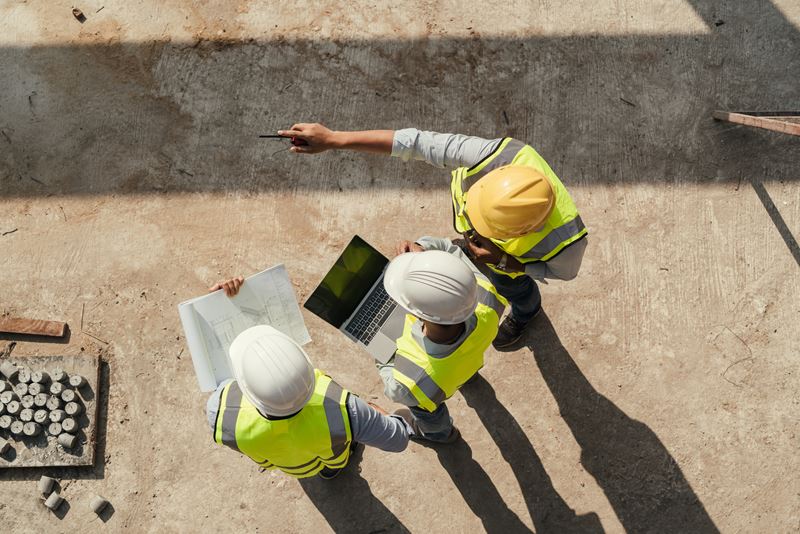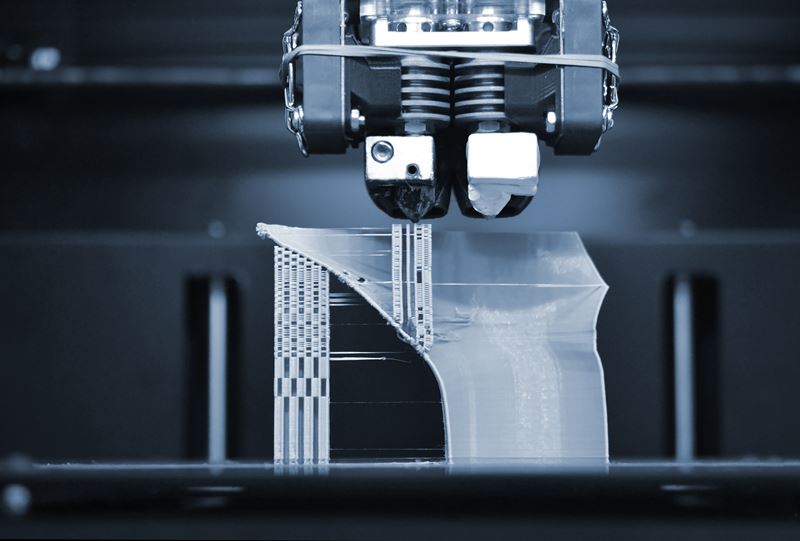3 tech solutions to improve construction site safety
3 tech solutions to improve construction site safety
On any given day, construction workers face dangerous situations, whether they’re working at heights, being exposed to environmental hazards, or operating heavy machinery. In a sector with inherent risks, keeping employees safe is job No. 1 for construction companies.
Today, new technologies are reshaping – and even revolutionizing – safety on construction sites. With the right digital investments, construction companies can elevate their safety measures, helping to keep workers out of harm’s way and prevent costly downtime.
Here’s a look at three game-changing tech solutions that can make construction sites safer:
1. Wearables that monitor workers’ health and watch for outside hazards.
Essential safety gear like hard hats and work boots have gotten an upgrade with wearable technology. Wearables can track workers’ health, detect environmental hazards, locate workers in the event of an accident, and more.1
For example, smart hard hats are equipped with sensors that can detect dangerous levels of noise, gases, or other safety issues, and alert the wearer through sound or visual signals. Some models have built-in navigation systems to help workers safely find their way around a job site.2
Smart boots are equipped with pressure-detection sensors that can detect falls or shocks sustained by workers and call for help automatically.3 With GPS technology, smart boots can also track the wearer’s location in case of an accident, so emergency personnel can reach them quickly. Some models of smart boots illuminate with LEDs to help make it safer to work in the dark.4
Another valuable safety tool for construction workers is smartwatches, which can track and monitor various health indicators. For example, heart-rate monitoring can detect signs of fatigue and let users know if it’s time to take a break.5
2. For big heights and tight spots, send in the drones.
With an ability to spot safety hazards and perform risky human tasks, drones are becoming an indispensable safety tool. These crewless, aerial vehicles can go extremely high and navigate tight spots, while taking high-quality images and videos. When drones are deployed, construction workers who might normally do inspections at great heights, or climb scaffolding to take measurements, can stay safely on the ground.6,7
Drones can also be used to survey large construction sites for hazards to ensure worker safety. For example, thermal-imaging sensors attached to drones can detect and notify workers of gas leaks and other harmful chemicals on the site.8
In addition to protecting workers, drones can be used to provide surveillance to help keep sites secure. For example, thermal imaging can prevent unauthorized people from entering a job site. The drone can send an alert if it detects someone going where they shouldn’t. The location of tools and materials can also be verified remotely, allowing construction companies to identify unauthorized activity on a project.9,10
3. AI (Artificial Intelligence) and analytics make equipment maintenance predictive.
Artificial intelligence (AI) is making inroads across many industries – and construction is no exception. One revolutionary use of this technology is predictive equipment maintenance, which offers significant advantages over the traditional approach of preventative maintenance. Rather than repair machines on a predetermined schedule, predictive maintenance uses a data-driven approach. This helps companies address potential failures before they occur – a game-changer since equipment failures can pose significant safety risks to workers on construction sites.11
AI-enabled equipment can analyze large amounts of data, and predict and detect equipment failures, with the help of Internet of Things (IoT) sensors integrated into the machinery. Pressure or temperature sensors collect real-time information about equipment, tracking features that could indicate performance issues. AI analyzes the data and looks for indications that something could go wrong. It also alerts users if it detects an issue.12,13
AI can also facilitate proactive maintenance. Equipment data can be analyzed to determine the best time for maintenance tasks, considering factors such as usage patterns, operating conditions, and historical performance.14 For example, by applying machine learning to historical patterns, AI might deduce that a specific bearing on a crane’s motor is likely to malfunction within a certain time frame. An alert lets the maintenance team rectify the issue because it leads to a significant breakdown or safety incident.15
While technology alone can’t solve every safety issue on a construction site, it has an increasingly significant role to play. Companies that embrace new solutions will make strides towards building a safer environment for their hard-working crew members.
Sources
1,6,8Nearby Engineers, “How Technology is Making Construction Safer”
2,3,5 DOZR, “The Best Wearable Technologies For Construction Workers,” Dec. 29, 2022
4 Openwage, “Wearable technology: Promoting health in construction,” Sept. 30, 2022
7,9 Go Codes, “6 Ways IoT Improves Construction Safety”
10 Fluix, “7 Benefits of Using Drones in Construction,” Dec. 22, 2022
11,12 Utilities One, “The Impact of Predictive Analytics on Construction Equipment Maintenance,” Oct. 8, 2023
13 Innovation & Tech Today, “How Can AI-Enabled Construction Equipment Improve Sites?”
14 Utilities One, “The Role of Artificial Intelligence in Construction Equipment Maintenance,” Oct. 11, 2023
15 The National Law Review, “The Future of Construction: AI and Predictive Maintenance Part 1,” July 25, 2023


